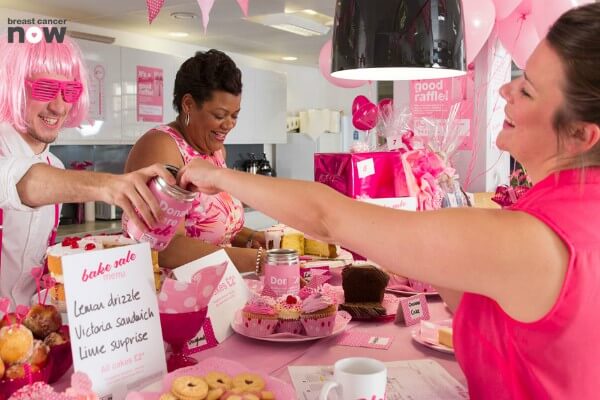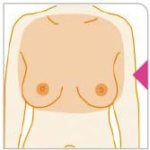Wear it Pink

October is Breast Cancer Awareness Month. Here’s how you can get involved.
Hearing the news that you’ve got breast cancer is devastating – and for roughly 1,015 women in Hertfordshire every year, this becomes the reality.
Nationwide, one in eight women will be diagnosed in their lifetime.
October is Breast Cancer Awareness Month, and 18 October is the day for Wear It Pink, where you can help raise money for essential research and care.
With help and advice from the charity Breast Cancer Now, we show you how you can help, as well as bring you an essential breast cancer symptoms checker.
Wear It Pink!
One of the UK’s biggest fundraising events since its launch in 2002, Wear It Pink has so far raised more than £33 million – and last year alone it raised an amazing £1.6 million.
So how can you help?
Well, however you like really – as long as it involves some pink! Hold a cake sale, organise a raffle, arrange a pink fancy dress day at work – whatever takes your fancy.
Lottie Barnden, Head of Mass Participation at Breast Cancer Care and Breast Cancer Now, explains why it’s so important.
‘Every year around 55,000 women and around 350 men are given the devastating news that they have breast cancer,’ she says. ‘Despite great strides in research, around 11,500 women and 80 men still die from breast cancer every year – that’s nearly one death every 45 minutes.
‘We currently fund around a third of all breast cancer research in the UK, and last year we responded to more than 5.8 million breast cancer support requests. Without the generosity of Wear It Pink supporters, we simply cannot continue to fund this crucial research and support for all those affected by breast cancer now, and in the future.’
Fundraising ideas
Whether you want to hold your event at work, school, among friends and family, or you’re organising a community event, there are loads of different ideas. Here are some for starters, but there are plenty more on their website:
- Hold an afternoon tea – you can either invite friends and family and ask them to donate, or make it a bigger event and ask people to donate for every afternoon tea they have
- Cake sale – this is a great idea for work or school, and you can ask parents and colleagues to make cakes to sell on the day; as long as they’re all pink!
- Hold a fancy dress competition or dress pink day at work – again, make sure the theme is pink, and charge a fine if people don’t comply!
- Hold a pink party
- Hold a pink raffle – make sure you leave enough time to get prizes together
- Hold a pink disco – this could be for friends or at school, as long as people dress in pink!
To find out more about the event, to get more ideas or to register, go to www.wearitpink.org.
For care, support and information, call Breast Cancer Care free on 0808 800 6000 Monday to Friday from 9am until 4pm, and Saturday 9am until 1pm, or visit www.breastcancercare.org.uk.

How Do I Check my Breasts?
Check all parts of your breast, your armpits and up to your collarbone for changes.
Look for:

Symptom checker
The earlier breast cancer is diagnosed, the better the chance of successful treatment. So it’s important to check your breasts regularly.
There are many different signs and symptoms of breast cancer, so checking your breasts for any unusual change is
important. Common breast cancer signs and symptoms include:
- A lump or swelling in the breast, upper chest or armpit. You might feel the lump, but not see it
- Changes in the size or shape of the breast
- A change in skin texture i.e. puckering or dimpling of the skin
- A change in the colour of the breast – the breast may look red or inflamed
- Rash, crusting or changes to the nipple
- Any unusual discharge from either nipple
Pain in your breasts is not normally a sign of breast cancer, but it can be if it is associated with other symptoms. While most pain is not a symptom, it’s important to look out for any pain that is unusual and persists over a period of time.
Noticing an unusual change like these doesn’t necessarily mean you will get breast cancer, but it’s important to get
checked out if you are worried.
For more information visit www.breastcancernow.org/TLC.
Pilates after Cancer Treatment
Did you know that Pilates is an amazing way of getting your body back to fitness after cancer treatment? Liz Van Hullen from Tring Pilates explains how it can help.
‘During the first world war, Joseph Pilates developed his techniques while working with hospital inpatients on their
individual rehabilitation,’ she says. ‘Since then the use of Pilates techniques as part of a rehab programme has massively increased.
‘Medical treatments and invasive surgery take a huge toll on the body. Good Pilates instruction will enhance the
healing process by manipulating scar tissue, promoting or rebuilding an even musculature, and developing core
strength. Pilates offers such a degree of flexibility that it can be absolutely modified for each individual and their
rehab needs.
‘It’s important that your consultant or physiotherapist has approved it before you introduce Pilates as part of your rehab programme, and make sure you use a studio with high quality equipments and highly trained instructors.’ www.tringpilates.co.uk
